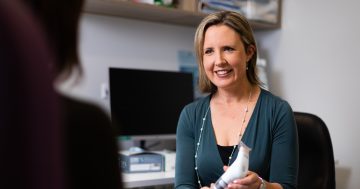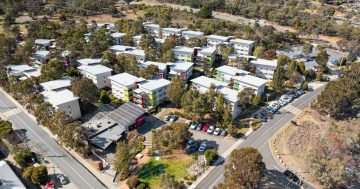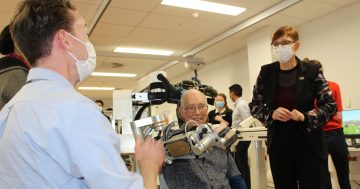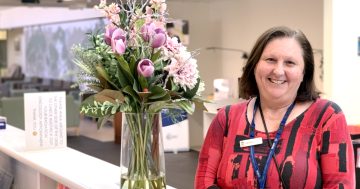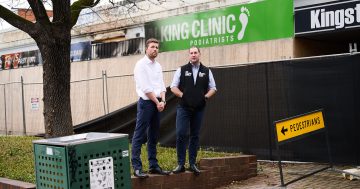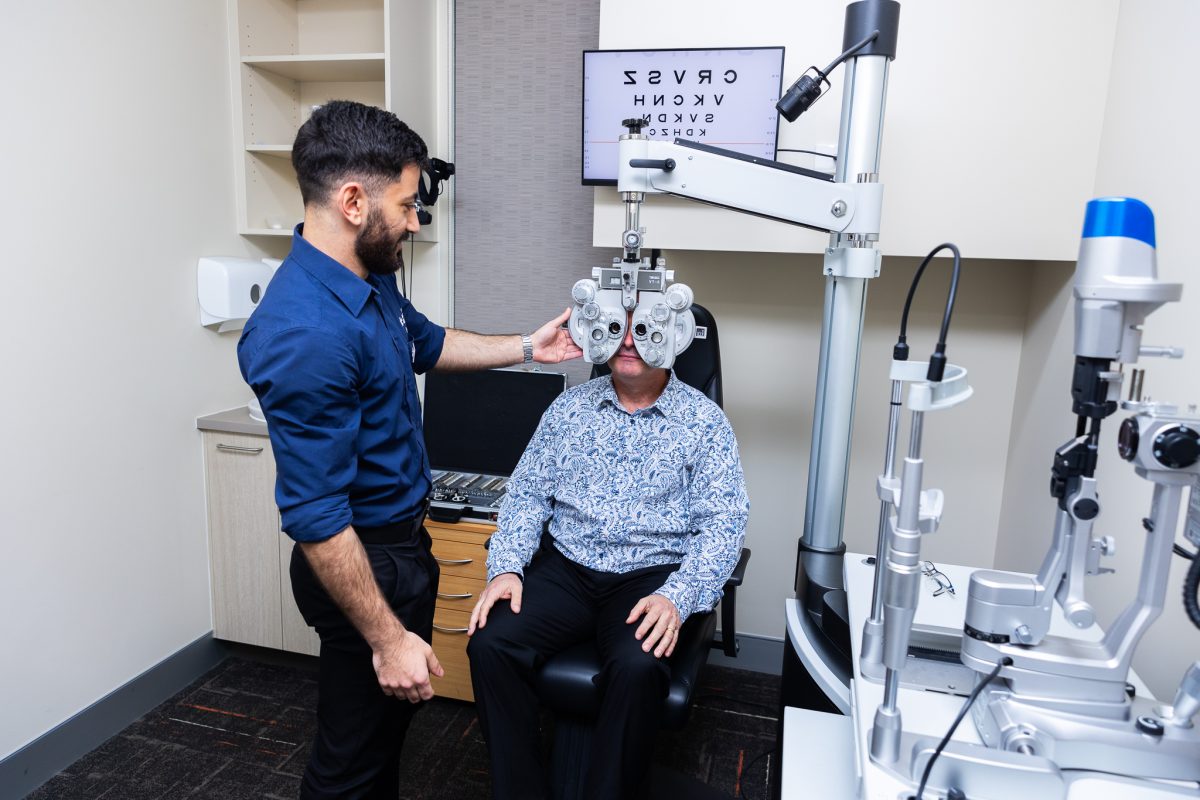
UC Master of Optometry student Esman Ayan takes Scott Yates through an eye test. Photo: Tyler Cherry.
A student-led clinic to help community members with their eyesight has seen an expansion.
Associate professor at University of Canberra (UC) and discipline lead of optometry, Dr Mei Ying Boon, said the expansion of the Optometry Clinic was driven by demand.
“When we first opened, we had enough facilities to manage the small number of students because we’re a relatively new course,” she said.
“But we’re now getting much larger numbers of students, and so we’ve doubled the clinic size.
“So the increased number of students could be taught adequately and get the experience, we needed a high number of clinic rooms.”
The Optometry Clinic operates across two sites on the university’s Bruce campus, in Canberra’s north. They provide a range of services to the public, including contact lenses, ocular imaging and colour vision testing.
The expanded space now has eight consultation rooms and three special instrument rooms, plus a dispensing room and frame room.
Dr Boon said the expansion would also change what the student optometrists could offer patients.
“We’re now able to offer specialty clinics,” she said.
“For example, if you’ve got low vision or vision impairment, we’ve got a specialty room set aside for that.”
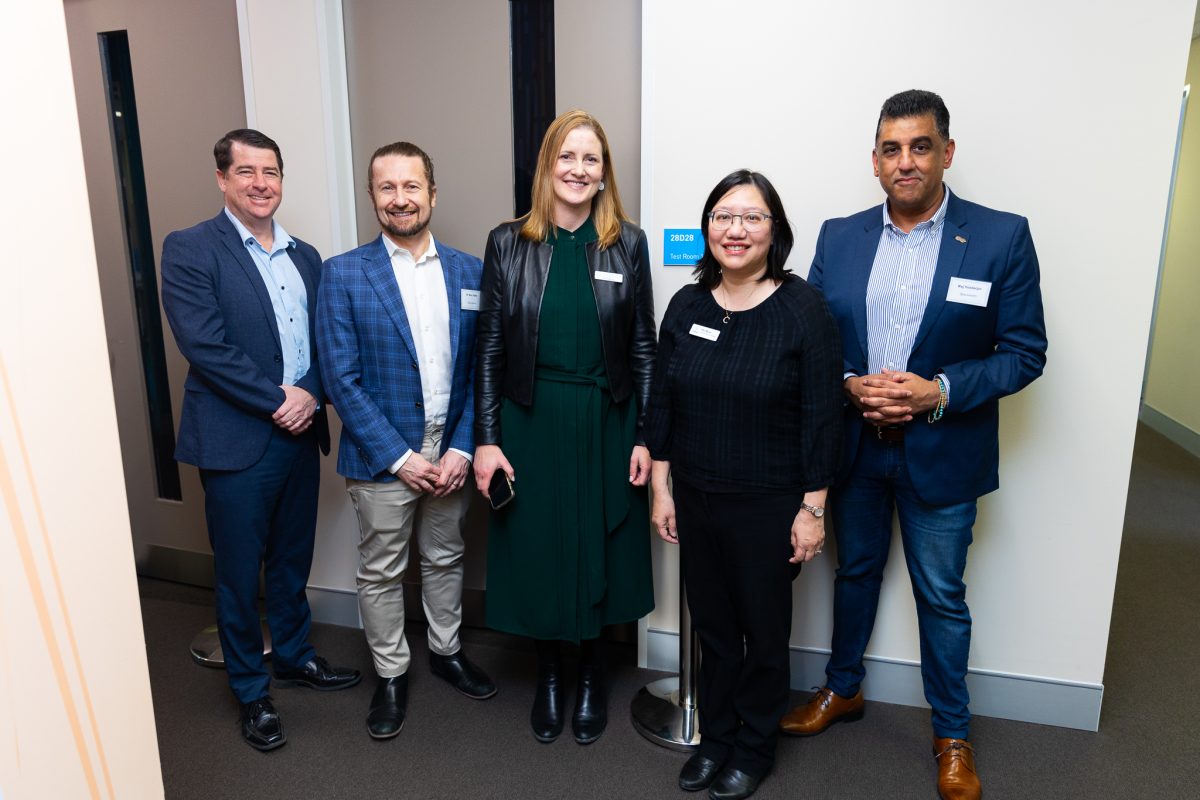
Dr Mei Ying Boon (second from right) says the expanded student-led clinic has “a lot more flexibility” as it sees patients and trains the next generation of optometrists. Photo: Tyler Cherry.
These new clinical spaces mean more consultations, ranging from regular eye tests to specialty services.
“It’s good to be able to offer the latest technology and treatments, so that students learn about them and can take that knowledge out into the community,” she said.
“For the community, an increased number of rooms will increase the number of patients that the students can see.”
Dr Boon said the expansion and increased number of tests was crucial for UC students.
“In their final year of training, they have to prove they meet the competencies required to be registered as an optometrist in Australia,” she said.
“The students see 50 per cent of their patients within our university clinics, and these are double-checked by a registered clinician.
“The others take place out in the community and experiencing the wider world.”
Patients with non-urgent needs and chronic conditions could be referred to the clinic, but Dr Boon said this was likely to expand.
“Now we’ve got these additional rooms, we can take more patients,” she said.
“I feel like it’s given us a lot more flexibility to do what we want to do and not be so constrained by space and time.”
Dr Boon said the Optometry Clinic’s expansion would see another flow-on effect: research opportunities.
“We’ve now got a capacity to do research in the clinic, and we’ve got an additional two instruct rooms, one of which is used for research.”
Further information on the Optometry Clinic can be found online.












